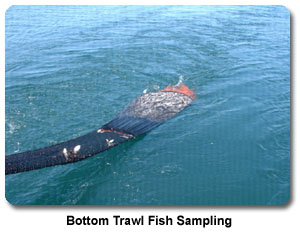- Home
- About S&T
- Taxa/Organisms
- Ecosystems
- Issues
- Methods & Tools
- Reports & Publications
- Location
- Search
Publisher: NBII | Format: URL
pollinators.nbii.gov — The global declines in many kinds of pollinator species could potentially impact the global food supply, as many plants depend upon specific pollinators to reproduce. The Web site of the NBII Pollinators Project provides access to information about the biology, ecology, conservation status, and threats to native pollinators, pollinator-dependent More...

Publisher: NBII | Format: URL
www.nbii.gov — Natural resource managers face complex decisions that require a clear understanding of the status of wildlife populations and their habitats. Monitoring is key to making effective management decisions and evaluating the outcomes of those decisions. The goal of NRMP is to improve the accessibility of monitoring efforts to resource managers to aid More...

Publisher: USGS | Science Center: Fort Collins Science Center (FORT, Ft. Collins) | Format: URL
www.fort.usgs.gov — Natural Resource Monitoring Partnership (NRMP) is a collaborative effort by the natural resource management community to improve monitoring efforts in order to support effective evaluation and decision-making by sharing information on monitoring projects and protocols. The Natural Resource Monitoring Partnership was built for easy access to More...

Publisher: USGS | Science Center: Forest and Rangeland Ecosystem Science Center (FRESC, Corvallis) | Format: URL
fresc.usgs.gov — Prescribed fire and forest thinning is a management strategy that promotes the development of forest structure and composition similar to that present under a native fire regime. This research summary describes how FRESC researchers will address the effects of prescribed fire and forest thinning on the diversity, abundance, and habitat More...

Publisher: USGS | Science Center: Pacific Island Ecosystems Research Center (PIERC, Honolulu) | Format: URL
biology.usgs.gov — How is avian pox and malaria impacting native Hawaiian honeycreepers? USGS scientists in Hawaii conduct surveys, develop new diagnostic tools, and test management strategies to understand the impacts of these introduced vector borne diseases on native Hawaiian wildlife.

Publisher: USGS | Science Center: Pacific Island Ecosystems Research Center (PIERC, Honolulu) | Format: URL
biology.usgs.gov — USGS scientists build on the research of ornithologists in the 1800's and 1950's to show whether native Hawaiian birds are in fact highly susceptable to mosquito-transmitted avian diseases such as pox and malaria. The results help explain current population patterns and could potentially aid resource managers in selecting birds for restoration in More...

Publisher: USGS | Science Center: Pacific Island Ecosystems Research Center (PIERC, Honolulu) | Format: URL
biology.usgs.gov — Many native Hawaiian forest birds have become endangered and extinct, possibly due to introduced avian diseases. Scientists use genetics, long term studies, and sentinel chickens and canaries to learn the prevalence and impacts of malaria and avian pox on native Hawaiian forest birds.

Publisher: USGS | Science Center: Northern Prairie Wildlife Research Center (NPWRC, Jamestown) | Format: URL
www.npwrc.usgs.gov — Caterpillars of Pacific Northwest Forests and Woods are well represented among the total number of insects. The caterpillar is the immature stage of moths and butterflies that are abundant on certain plants at various times of the year. This booklet is a field guide with keys to the identification of caterpillars commonly found in forests and More...

Publisher: USGS | Science Center: Great Lakes Science Center (GLSC, Ann Arbor) | Format: URL
www.glsc.usgs.gov — The USGS Great Lakes Science Center (GLSC) has a long history of significant contributions to the understanding of aquatic resources in the Great The main focus of the Center's research is on the long-term dynamics of native and non-native aquatic species and the sustainability of Great Lakes fisheries. Since the Center was established, the fish More...

Publisher: USGS | Science Center: Western Fisheries Research Center (WFRC, Seattle) | Format: URL
wfrc.usgs.gov — The Popo Agie Conservation District (PACD), headquartered in Lander, Wyoming, is developing a management plan for the Popo Agie Watershed. A key component in developing an effective management plan is the need for a scientifically valid and rigorous monitoring program. Paramount in this monitoring is the need to identify leading indicators of More...
